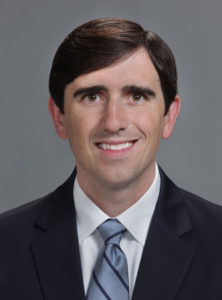Meniscus Tear Specialist

Are you experiencing pain and stiffness in your knee? If so, you may have torn your meniscus. A meniscus tear is among the most common knee injuries. A torn meniscus can occur in several different ways. Meniscus tear specialist, Dr. Robert Boykin provides diagnosis and both surgical and nonsurgical treatment options for patients in Asheville who have torn their meniscus. Contact Dr. Boykin’s team today!
Anatomy of the Meniscus
The knee joint is the area where the thigh bone (femur) meets the leg bone (tibia). A third smaller bone is present on the front of the knee called the kneecap (patella). The knee is stabilized primarily by a series of ligaments which serve as the primary restraints to hold the knee together during movement. The ends of each of the bones are capped by a type of cartilage called articular cartilage, which allows for smooth and painless motion of the knee. Inside the knee there are also two areas of circular or C-shaped cartilage called the menisci.
There is a meniscus on both the inside and outside of the knee. This cartilage serves as a shock absorber since very high loads are transmitted across the knee with walking, running, going up and down stairs, squatting, or performing sports. The menisci are extremely important to distribute the load across the knee and protect the articular cartilage. The menisci also serve as secondary stabilizers of the knee to assist the ligaments. If a meniscus sustains a significant tear, it loses its ability to function. Over time this will lead to degradation and wearing of the articular cartilage. Over time this process leads to a condition called osteoarthirits, or global wear of the cartilage throughout the knee. Knee specialist Dr. Robert Boykin focuses on the treatment of meniscus tears for patients in Asheville, Arden, Fletcher and surrounding communities.
Overall, meniscal injuries are quite common. Meniscal tears can occur in athletes of any age, but also may occur in patients with less strenuous activity demands. As a patient gets older the meniscal tissue becomes more brittle and may be predisposed to tearing. Some patient may also develop calcific deposits (called pseudogout) in their menisci, which also makes the cartilage stiffer and easier to tear.
Symptoms of Meniscus Tear
The primary symptoms of a meniscus tear include:
- Pain on the inside or outside of the knee
- Catching, clicking, locking with movement
- Tenderness to touch directly over the joint line of the knee
- A sense of instability of the knee as it feels like it will “give out” or “lock up” with walking and/or twisting.
Indicators for Meniscus Tears
Upon the initial presentation Dr. Boykin will take a history of the events surrounding the injury and perform a physical exam of the knee. This will include specific tests for a meniscal tear such McMurray’s test and joint line tenderness. The other structures in the knee will also be assessed for injury to make sure there is no additional injury. X-rays will be performed to make sure there is no damage to the bone or calcification of the meniscus, and to measure overall alignment of the leg. Although a tear usually can be diagnosed by a patient’s symptoms and physical exam, in many cases an MRI will be performed to examine the extent of injury, visualize the meniscus, and confirm the diagnosis.
In certain cases including small tears with minimal symptoms, tears in the presence of advanced osteoarthritis, or more longstanding degenerative tears, Dr. Boykin may initially recommend non-operative treatment including rest, physical therapy, icing, anti-inflammatory medications, and possibly bracing. For larger tears, those that have failed non-operative management, and those with mechanical symptoms such as locking of the knee, surgery is typically recommended. The type of surgery depends on the character and location of the meniscus tear, associated injuries, the patient’s age, and activity goals.
Surgical Treatment for Meniscus Damage
Dr. Boykin performs many of the procedures for meniscal injuries through an arthroscopic approach using small incisions, a camera, and specialized instruments. If the meniscus has a small symptomatic tear, a tear that is shredded beyond repair, or a tear in the inner third of the meniscus, then it is treated by removing the area of the tear. This is called a partial meniscectomy and great care is taken to only remove the involved part of the tear and leave as much of the healthy meniscus as possible. This procedure is highly successful in alleviating symptoms associated with a meniscal tear and is performed arthroscopically.
In larger tears that are able to be fixed and those tears in the outer two thirds of the meniscus an attempt is made to repair the meniscus and preserve as much of the original meniscus as possible. This is performed with a combination arthroscopic and open procedure, using a camera and small instruments in the knee, while making a small open incision on either the inside or outside of the knee to complete the repair. Strong stitches are placed through the tear to bring the tissue back together and allow for healing. In patients who have very serious meniscus injuries, or who have had prior treatment for a meniscus condition, they may be candidates for a meniscal transplant procedure.
For more information on knee instability or meniscus knee injuries, or to learn more about the surgical treatments for meniscus tears offered by Dr. Robert Boykin, Asheville, Arden, Fletcher and surrounding North Carolina communities, orthopedic surgeon, please contact his office to schedule a consultation.
